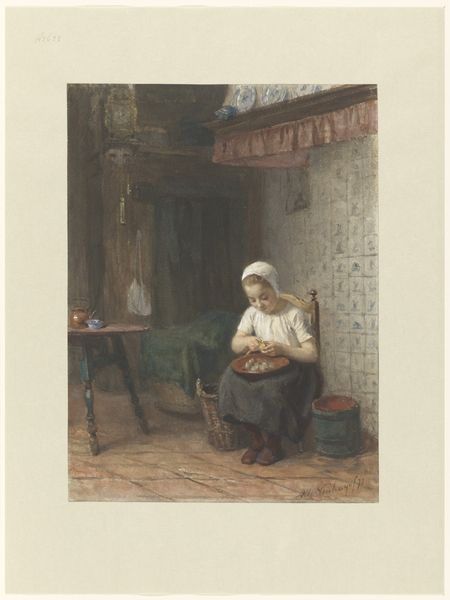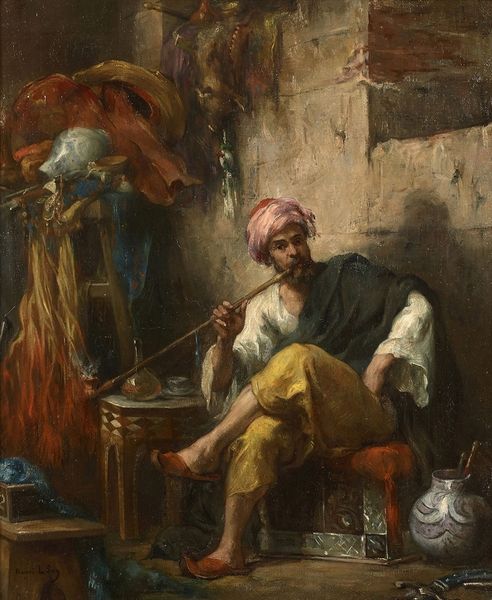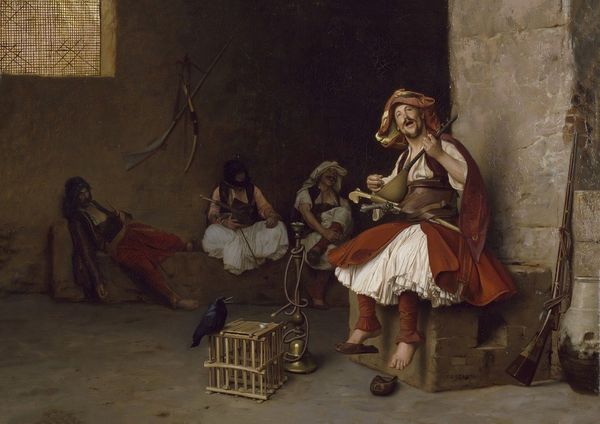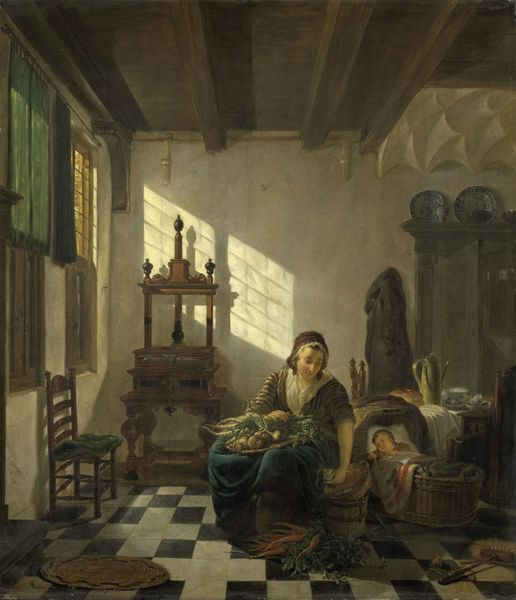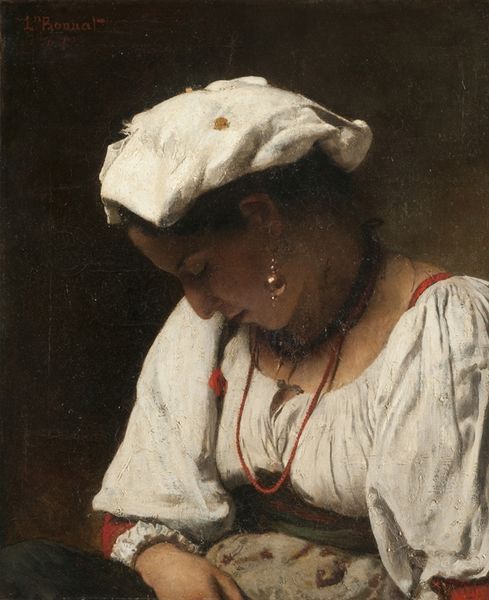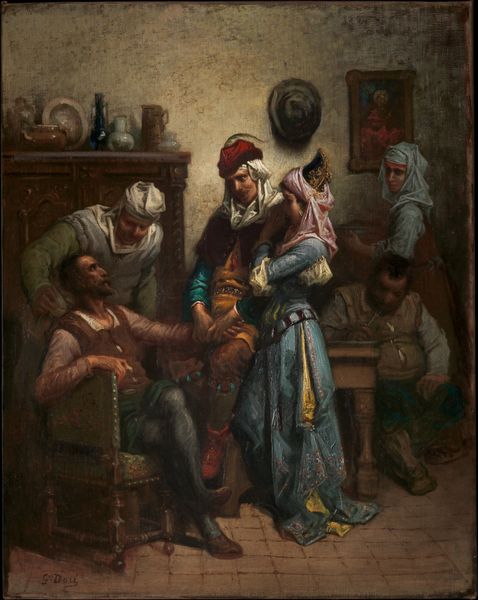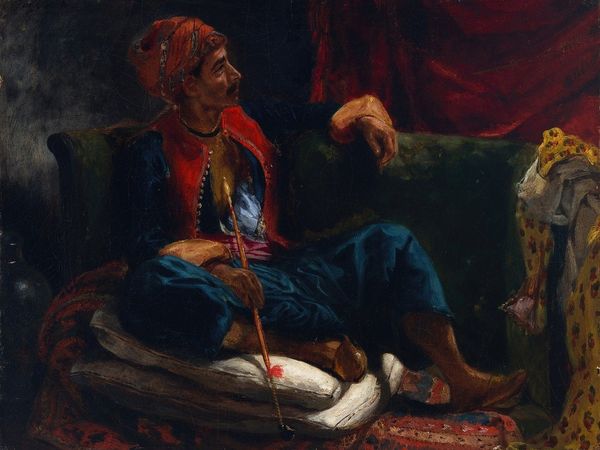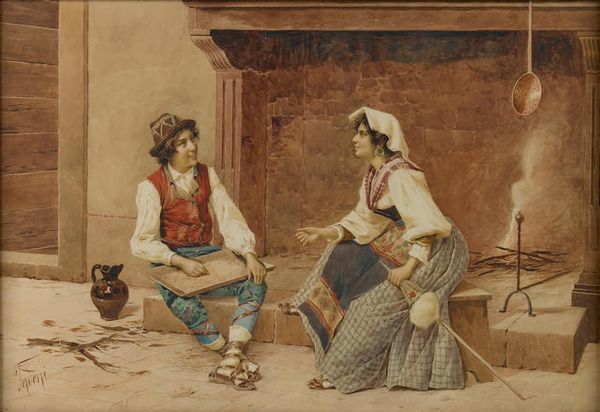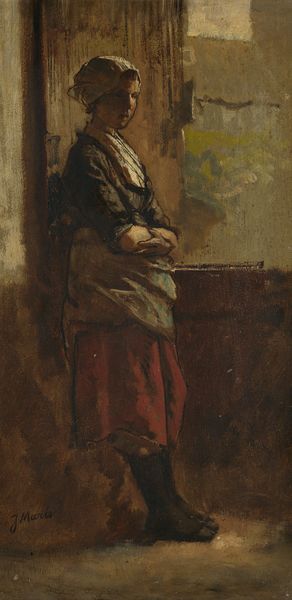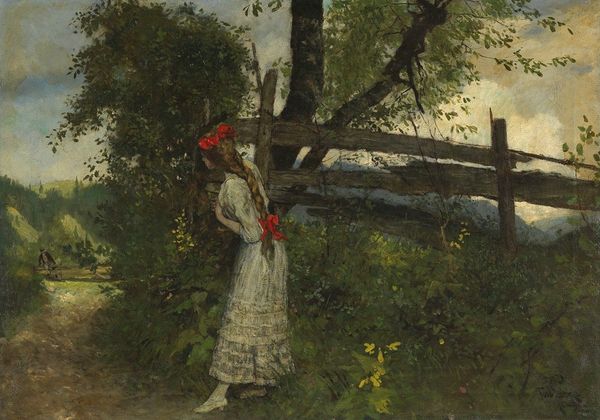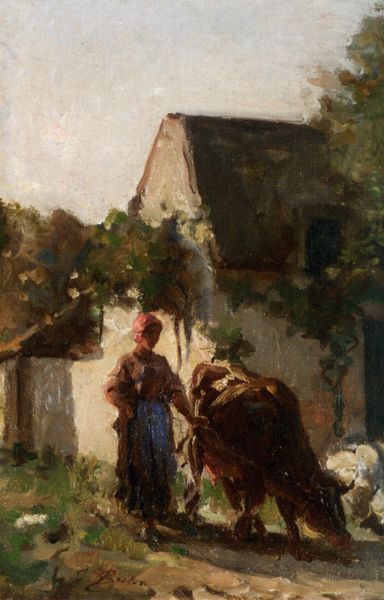
painting, oil-paint
#
portrait
#
painting
#
oil-paint
#
oil painting
#
orientalism
#
genre-painting
#
academic-art
Copyright: Public Domain: Artvee
Jean-Léon Gérôme painted this intriguing portrait, titled "Chef arnaute," sometime in the 19th century. The seated figure, adorned with a turban, immediately recalls the visual language of power and authority, harking back to ancient Near Eastern and Ottoman empires, a motif we also see resurface during the Renaissance. He's also equipped with weapons, symbolic of personal freedom and power. Yet, the languid pose introduces a layer of complexity, and we are faced with an image of defiance but also ease. The hookah to the side, meanwhile, suggests a sense of leisure and contemplation, a nod to the pleasures and intrigues that accompany power. Here, collective memory and subconscious projection work together as the painter infuses the image with symbolic meaning. The figure's self-assured gaze is a silent challenge, engaging viewers on a deep, subconscious level, making us confront our notions about cultural identity, power, and the intricate dance between tradition and modernity. It is a journey through time, in which symbols evolve, adapt, and resurface.
Comments
No comments
Be the first to comment and join the conversation on the ultimate creative platform.
